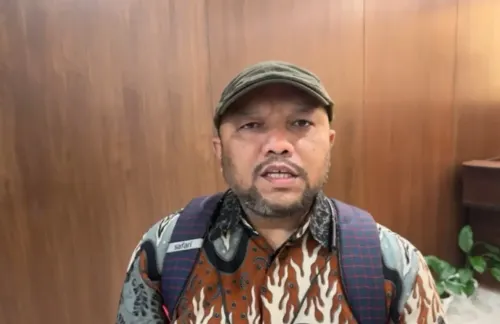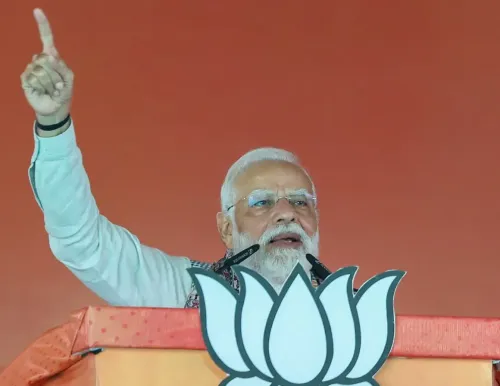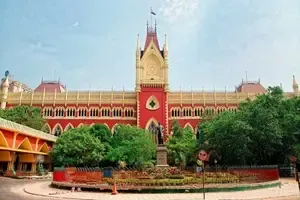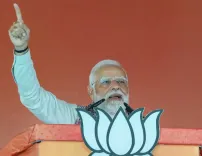What Happened During the First Phase of Bihar Assembly Election?
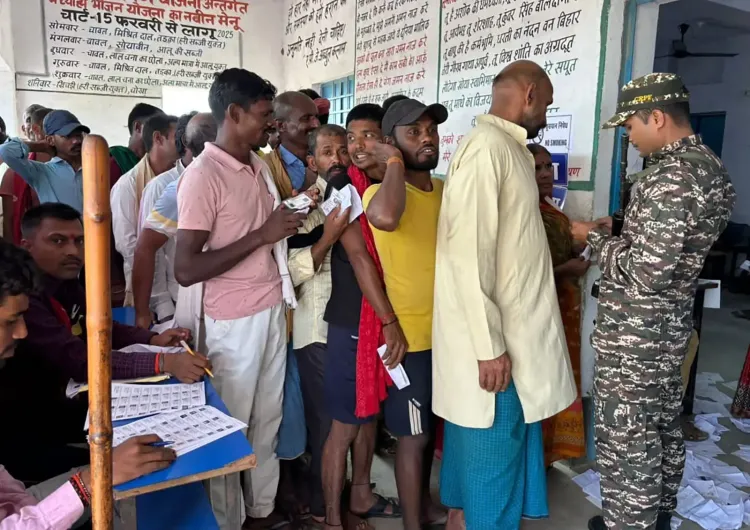
Synopsis
Key Takeaways
- Total voter turnout was 60.13% by 5 p.m.
- Begusarai district had the highest turnout at 67.32%.
- Isolated incidents of violence occurred, notably involving Deputy Chief Minister Sinha.
- Election Commission dismissed allegations of misconduct as baseless.
- A diverse range of candidates are competing, including notable figures from various parties.
New Delhi, Nov 6 (NationPress) The voting process for the initial phase of Bihar Assembly elections came to a close on Thursday amidst reports of minor clashes. The Election Commission has firmly denied claims regarding power outages and fraudulent voting.
As per data from the Election Commission of India, a participation rate of 60.13 percent was recorded by 5 p.m. on Thursday across 121 seats in the Bihar Assembly elections.
Among the 18 districts where voting occurred, Begusarai led the way with a 67.32 percent turnout, followed closely by Samastipur at 66.65 percent and Madhepura at 65.74 percent by 5 p.m.
Notably, Begusarai's Bachhwara seat (Assembly constituency 142) saw the highest participation at 69.67 percent until 5 p.m., according to ECI data.
Although polling concluded at 5 p.m., individuals who were in line before the closing time were permitted to cast their votes.
A significant number of women voters were observed waiting eagerly to exercise their right to vote since early Thursday morning.
Recently, Bihar has gained recognition for its high female voter turnout.
Among the reported instances of violence, one of the most severe occurred in Lakhisarai, where the convoy of Deputy Chief Minister and BJP candidate Vijay Kumar Sinha was allegedly surrounded and targeted with stones and slippers.
This incident led to tense confrontations between BJP and Rashtriya Janata Dal (RJD) supporters, prompting security personnel to intervene and restore order.
Deputy Chief Minister Sinha accused RJD supporters of orchestrating the assault and alleged intimidation of his agents, framing the incident as indicative of a 'booth-capture mindset'.
Simultaneously, the RJD and other opposition parties raised separate concerns regarding 'targeted disruptions' at specific booths throughout the state.
Bihar's Chief Electoral Officer (CEO), Vinod Singh Gunjiyal, dismissed numerous allegations from the Opposition, including claims of deliberate power outages at 'strong booths' of the Mahagathbandhan, aimed at hindering the voting process.
In a strong rebuttal, the electoral body labeled these claims as 'entirely baseless and misleading'.
In a social media post on X, the CEO affirmed that voting 'is proceeding smoothly at all polling stations in Bihar'.
Furthermore, the Election Commission of India is adhering to all standard protocols to ensure a fair, transparent, and uninterrupted voting process.
In another instance, the RJD shared claims from three voters alleging that in Sahibganj-98 Assembly Constituency of Muzaffarpur district at booth number 147, they were informed that their votes had already been cast.
These same voters were later shown on a post from Bihar's CEO displaying their inked fingers, confirming that they had indeed exercised their democratic rights.
The electoral body consistently provided updates indicating that voters were casting their votes without hindrance and that monitoring teams were closely observing polling stations.
During this initial phase, 121 Assembly constituencies were contested across 18 districts with 1,314 candidates in the race.
The main contest is between the ruling National Democratic Alliance (NDA), led by Chief Minister Nitish Kumar of the Janata Dal-United, and the opposing Mahagathbandhan alliance led by Tejashwi Yadav of the RJD.
The entry of Prashant Kishor's Jan Suraaj Party may play a disruptive role and impact outcomes in various seats.
Among the candidates in this phase are the Mahagathbandhan's Chief Ministerial candidate Tejashwi, BJP candidates Samrat Chaudhury and Vijay Kumar Sinha—both current Deputy Chief Ministers—along with State JD-U President Umesh Kushwaha and RJD's Bhola Yadav, a close aide of party chief Lalu Prasad Yadav.
Also contesting are Bhojpuri actor Khesari Lal Yadav (RJD) and popular folk singer Maithili Thakur (BJP).
The election in Mokama is also drawing attention, where JD-U candidate Anant Singh was recently taken into custody on charges related to the murder of Dularchand Yadav during campaigning for JSP candidate Priyadarshi Piyush.

